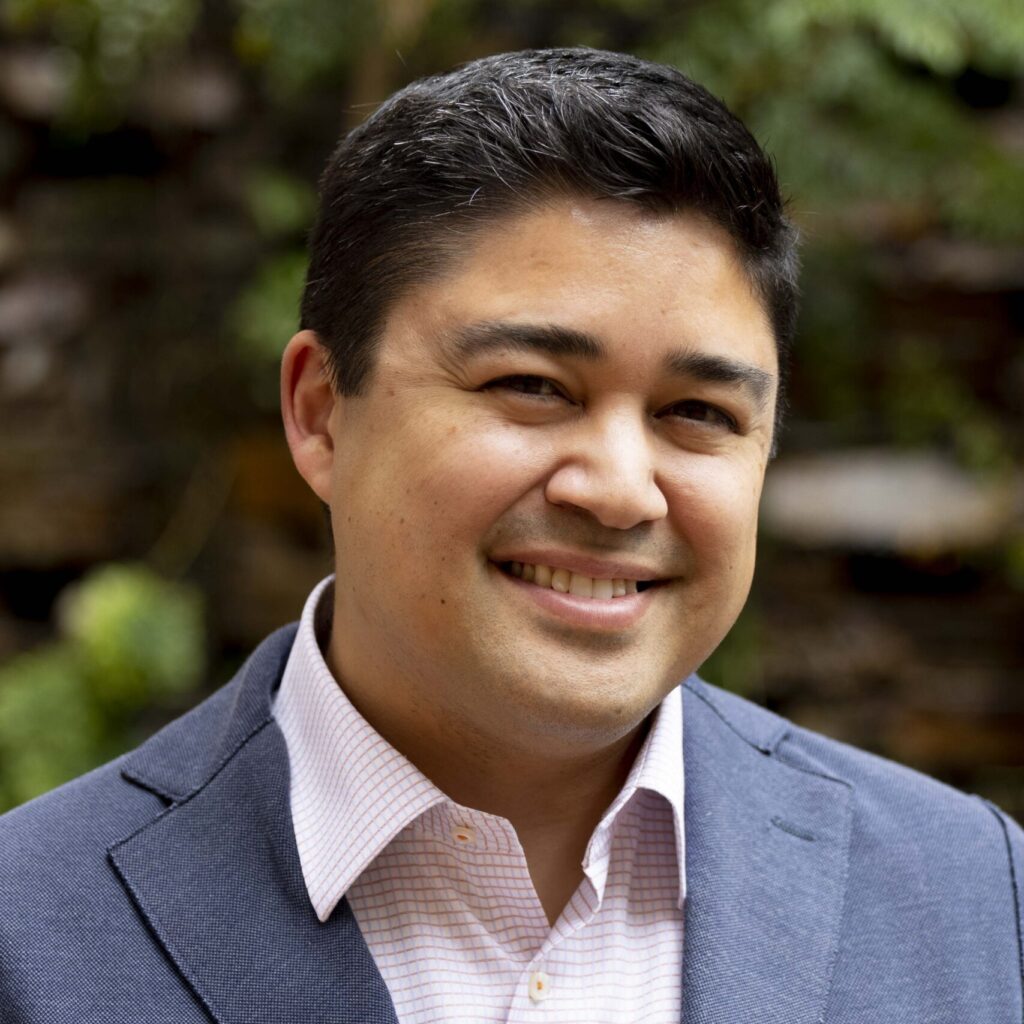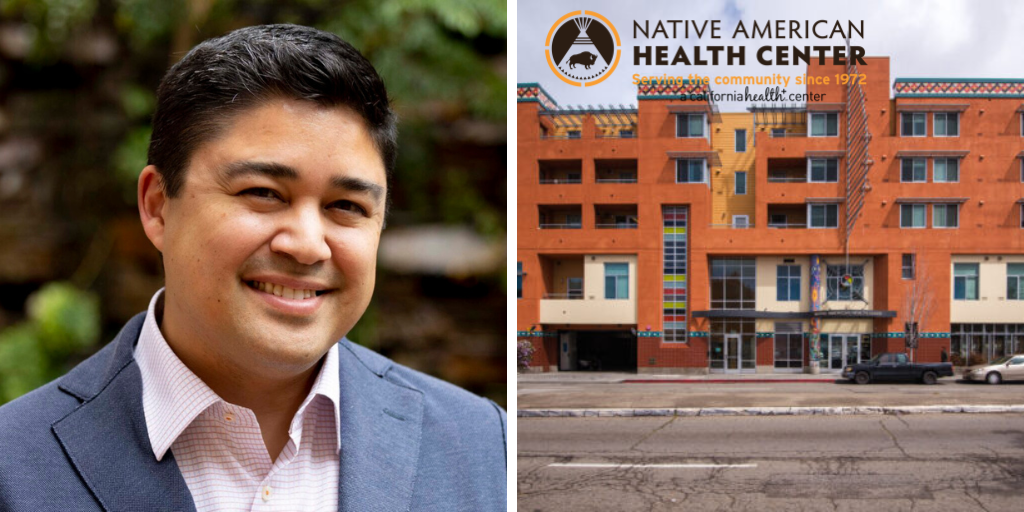Meet Native American Health Center’s First Chief of Behavioral Health
Our community health centers are mission-driven to provide the most accessible and equitable healthcare to all who walk through their doors. Integrating behavioral healthcare and mental wellness into our whole healthcare approach helps to ensure this. Helping our patients, who are often historically marginalized and disproportionately affected by social determinants of health, have access to mental health services helps to achieve our goal of carving a direct path toward health equity for all.
We recently sat down with Dr. Utaka Springer, Native American Health Center’s first Chief Behavioral Health Officer to learn more about how this role will be pivotal in strengthening and supporting mental wellness for their patients and for the communities they serve.
 Name: Dr. Utaka Springer
Name: Dr. Utaka Springer
Title: Chief Behavioral Health Officer (CBHO), Native American Health Center (NAHC)
Guiding Quote: Effective healthcare is not just about medicine, behavioral health, or any one service acting in isolation. Our services are much stronger when woven together, within the fabric of the community.
Alameda Health Consortium: Tell us a little bit about yourself.
Dr. Utaka Springer: I’m a licensed psychologist and hold a PhD specializing in clinical and health psychology from the University of Florida at Gainesville, with advanced postdoctoral training in polytrauma through the Veterans Affairs Northern California Healthcare System and UC Berkeley’s neuroscience department. The setting of my doctoral training was unique for doctoral psychology programs because it was embedded in a level one trauma center in an extensive medical campus with opportunities to work across the allied health professions. This allowed me to gain experience early on in applying the practice of psychology with many different health specializations, medical populations, and settings. The practice settings where I trained included general and specialized outpatient psychology clinics, hospitals, rehab and long-term care facilities, a locked inpatient facility, research centers, military bases, county health departments, schools, and now a community non-profit clinic. I have never known psychology to work separately and independently from other healthcare teams or professionals, so the importance of integrated care is wholly embedded in my idea of effective behavioral health services.
My upbringing and where I’m from also influenced a lot of my professional decisions and trajectory. I grew up in a great little community and college town of Menomonie, in northwest Wisconsin – near Indian Country, and not far from Minneapolis. My mother is a Japanese immigrant who was raised with Buddhist and Shinto influences, and my father is from a large Catholic family with Polish and German roots. He is an Air Force veteran and artist and was a career university photographer and documentarian. Some of these elements, and the values of the community where I was raised such as the importance of service, tradition, and inter-reliance, led me to think a lot about and to value equity, inclusion, culture, and diversity early on in my life.
AHC: What was it about community health centers (CHCs) that drew you to their work?
US: I’ve been working in behavioral health for 20 years, and I’ve spent the last 10 working in community clinics – which is where I feel my core values and the work align very well. It’s a model of care that is consistent with my principles – supporting equitable, accessible healthcare as a fundamental right for everyone – while also embracing cultural diversity, tradition, and the role of community in one’s experience of wellbeing. Community is where we as humans can experience genuine belongingness and inclusion, interdependence, responsibility, and even generosity. The community where I was raised, and the people at Native American Health Center, both have taught me a lot in that regard.
AHC: In your role as the CBHO at Native American Health Center, what are often some of the barriers you experience in providing care to those who require mental health services?
US: Truthfully, I believe we don’t have enough people entering the behavioral healthcare field. I think, unfortunately, it’s often overlooked as a career choice for those inclined to pursue careers in healthcare due to societal stigmas still attached to mental health issues. Often the average person may not fully comprehend how effective and transformative behavioral health services have become – especially when operative principles, theory, and procedure are applied – however, public behavioral healthcare awareness campaigns are working towards course-correcting this stigma and perhaps this will lead to more people entering the behavioral healthcare field.
Even in our field, healthcare professionals can mistakenly assume that BH services aren’t effective when people have co-occurring addictions or ongoing stressors such as traumatic relationships or basic resource needs. This is far from the truth; we regularly see amazing growth in our clinics. We do a lot of data collection and quality improvement studies within the department and are seeing encouraging outcomes even when circumstances seem extraordinarily challenging. It is true it can take a great deal of effort and motivation to see true and/or lasting change, but our continued experience, research, and effective collaborative care practices are finding more and more efficient routes to improved mental wellbeing every year.
One of the ways that is helping to counter the deficits in behavioral healthcare staff was rolling out and developing virtual care, specifically telehealth since literally the first day of COVID-19 lockdowns in March 2020. This allowed us to provide greater services to higher number of patients efficiently and effectively and has paved the path towards addressing some of the barriers patients face when accessing behavioral health services, like transportation, and hectic work and personal schedules. While we love and appreciate meeting our patients in person, we have seen that combining virtual care with in person appointments has led to greater positive outcomes, especially since it’s become a permanent fixture in our healthcare delivery systems.
AHC: High-quality, patient driven care can be challenging, how do you find ways to uplift and support your behavioral Health Team?
It’s true, behavioral health providers can be susceptible to early career burnout through high work volume or experiencing vicarious trauma through the emotionally heavy stories and experiences they’re helping their patients work through. Finding solutions to prevent that is a team effort. We usually start clinical meetings with a mindfulness meditation, a cultural practice, or some clinical technique with different staff taking the lead. This helps to evoke a mindset of relaxation, joy, acceptance, and gratitude.
When COVID-19 was at its most prevalent, we didn’t have group gatherings around food, which was one of the ways we used to meet and connect, however, we found other creative ways to help reduce the emotional toll our work took on us. Dr. Mila Stublefield, one of our Senior Managers carries the informal title of “Queen of Self-Care.” She sends out “Wellness Wednesday tips” to all staff weekly and engages our staff in friendly self-care competitions incentivized with small gift cards. This encourages us to practice and share creative ways to make our work sustainable and less emotionally burdensome so we can continue to be there for our patients during times when they need us the most.
Dr. Alexis Hamill, who manages the care of our members with complex trauma, is mindful of limiting caseloads and reducing certain visits for her therapists while also ensuring that access to care standards are never compromised. Dr. Hamill has also held vicarious trauma management seminars and devised other ways to ensure our staff receives support and feels a communal connection to the rest of the team which helps reduce stress and prevent isolation and burnout.
We also have a great HR Department! They do a great job hosting fun and engaging staff appreciation weeks and celebratory events to help lift staff morale.
Lastly, every month we try to get our behavioral health staff from across our different sites and remote locations to meet somewhere in person after work, with one rule – you can’t talk shop!
One of our logos shows a buffalo with the hashtag #TakesAHerd – a reminder of the importance of team.
AHC: Are there ways in which you fold traditional Native methods of healing with more contemporary practices?
US: Many of our Native and non-Native members are often interested to hear about the traditional programming and cultural services offered at NAHC. These are organized by our Community Wellness Department and shaped by our Chief Cultural Officer, Anthony Guzman, with additional planning and feedback from advisory boards in the community and on staff. These traditional methods offer a supplement to our clinical services by helping people connect to other local community members, hear wise counsel from an elder, receive natural healing medicines, engage in ceremony or traditional artistic expression, and otherwise strengthen cultural identity. People who participate often find these activities spiritually uplifting in ways that complement the value of healing through our clinical services. It’s a goal of our clinical behavioral health service to help raise awareness of these activities for people engaged in our services. Our agency is actually developing a cultural connectedness screening tool to help promote access to the cultural programs we hold regularly. Because NAHC serves everyone in this very diverse community, we’re always looking for creative ways like this to bring culture, values, and personal practices into clinical discussion and service plans for our members regardless of race, ethnicity, or identity.
AHC: In what ways are Community Health Centers uniquely positioned to provide mental health services to our most vulnerable communities?
US: Simply put, our community health centers have a history and rapport with the communities they serve which in turn helps establish the critical first steps to successful behavioral health services – trust and understanding. They hold personal connections, local knowledge, and passion to serve the community like those already serving in these venues always have had. Community clinics know how to listen more than they talk, course correct or build new programs when they miss the target, and supply what the community needs. It’s a very worthy endeavor. It’s an honor to serve in this position at NAHC, and I encourage people to come by some of the many community events we hold, anytime!
You can learn more about Native American Health Center HERE.
